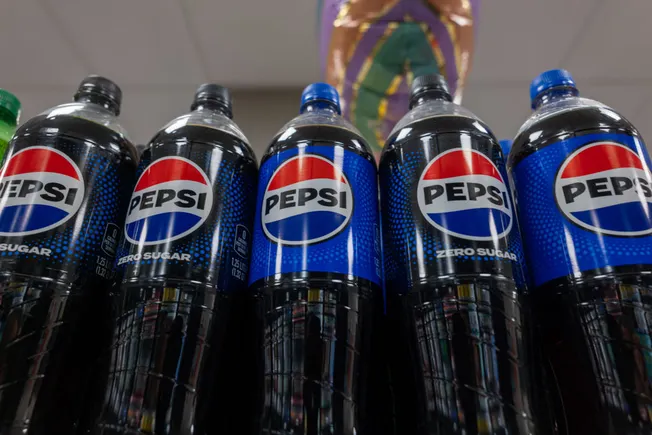These are significant changes that we need to respond to, and it’s going to take time for the systems to change to be able to get to the recycle rates we think we need for food-grade packaging. That’s why we’ve added more recycled content to our goals. We’ve incorporated more recycled PET in our beverage packaging, and we’re doing a lot of work to make sure we have the quality and the quantity available for our needs.
That’s where the pragmatism comes in — recognizing the reality of the world we operate in and trying to make sure we’re pushing as hard as we can while recognizing those realities. We’re working with our suppliers and many others to try to make those changes happen faster and more effectively.
What lessons have you learned from this process, and how are you applying them to future sustainability goals?
One of the lessons learned is that we have to have a very clear understanding of the science and the timelines. We need to have a very clear understanding of what it’s going to take to get there and be honest about what’s going to be difficult or impossible. We have to be very clear about what’s going to be possible and what’s going to be easy, and be ready to move with the science and with the realities we see in the world.
Another lesson is about the importance of collaboration. We can’t do this alone. We’ve got to work with others to make these changes happen. We’re part of the solution, but we’re not the whole solution. We need to work with others to make it happen.
Finally, we must stay focused. These are very complex, very large challenges. We need to keep pushing and keep our eye on the ball. Sustainability is not something you achieve and then stop; it’s something you keep working on and keep pushing on.
As we move forward, we’re going to keep learning, keep adapting, and keep pushing to make the changes we need to make. We’re committed to a sustainable future, and we’re going to keep working towards that future.
Overall, PepsiCo’s sustainability goals revamp reflects the company’s commitment to evolving with the times, staying grounded in science, and focusing on maximum impact. By openly discussing the challenges and changes in its sustainability strategy, PepsiCo sets an example for other companies to follow in their sustainability journeys.
We want to set the standard for sustainability and drive positive impact in all aspects of our business. This includes our approach to recycling, reuse, and regenerative agriculture. These are critical areas where we believe we can make a significant impact on the environment and society as a whole.
When it comes to recycling, we recognize the challenges that exist on a global scale. Different regions have varying laws, infrastructure, and mechanisms in place for recycling. This can make it difficult to implement consistent and effective recycling practices across the board. In some cases, large markets have yet to fully embrace the use of recycled materials in their products, which hinders progress towards a more sustainable future.
Similarly, the concept of reuse presents its own set of challenges. While we remain committed to promoting reusables, we have had to adjust our goals to account for the complexities of scaling up reuse initiatives. The lack of a common definition and regulatory framework for reuse makes it difficult to set specific quantitative goals. However, we continue to focus on incorporating reusable, compostable, or recyclable materials in our packaging as part of our broader sustainable packaging strategy.
In the realm of regenerative agriculture, we have set ambitious targets to promote sustainable farming practices and protect biodiversity. We have increased our goals for regenerative agriculture and added a nature component to our strategy to further enhance our impact on the environment. By working closely with farmers around the world, we aim to drive positive change in agricultural practices and contribute to a more sustainable food system.
At PepsiCo, we are constantly evaluating the forces that influence our sustainability strategy, including policymakers, consumers, and competitors. While we seek input from various stakeholders, our ultimate goal is to lead by example and set the standard for sustainable practices in the industry. We are committed to driving positive change and making a meaningful impact on the environment and society through our sustainability initiatives.
When it comes to sustainability in packaging, PepsiCo faces a unique challenge due to its ownership of a variety of brands in both the food and beverage industries. With brands like Lay’s under its umbrella, as well as a range of beverage bottles and cans, PepsiCo must juggle the different needs and requirements of each business line when it comes to sustainability.
For PepsiCo, both food and beverage packaging are equally important and central to their sustainability goals. While beverage packaging is typically rigid and consists of materials like PET bottles or aluminum cans, food packaging often involves flexible film. The recycling systems for beverage packaging are more established, with efforts to increase the use of recycled content already underway in North America since 2020.
On the other hand, the food packaging industry faces more challenges, with a less developed end-to-end system that requires changes in collection, processing, and material selection to ensure food safety, freshness, and quality. PepsiCo acknowledges the complexity of the food packaging ecosystem and is investing time and resources into improving it.
Despite the differences in the two types of packaging, PepsiCo is committed to sustainability across all its business lines. By focusing on increasing recycled content in beverage packaging and addressing the complexities of food packaging, PepsiCo aims to make significant strides towards a more sustainable future.


